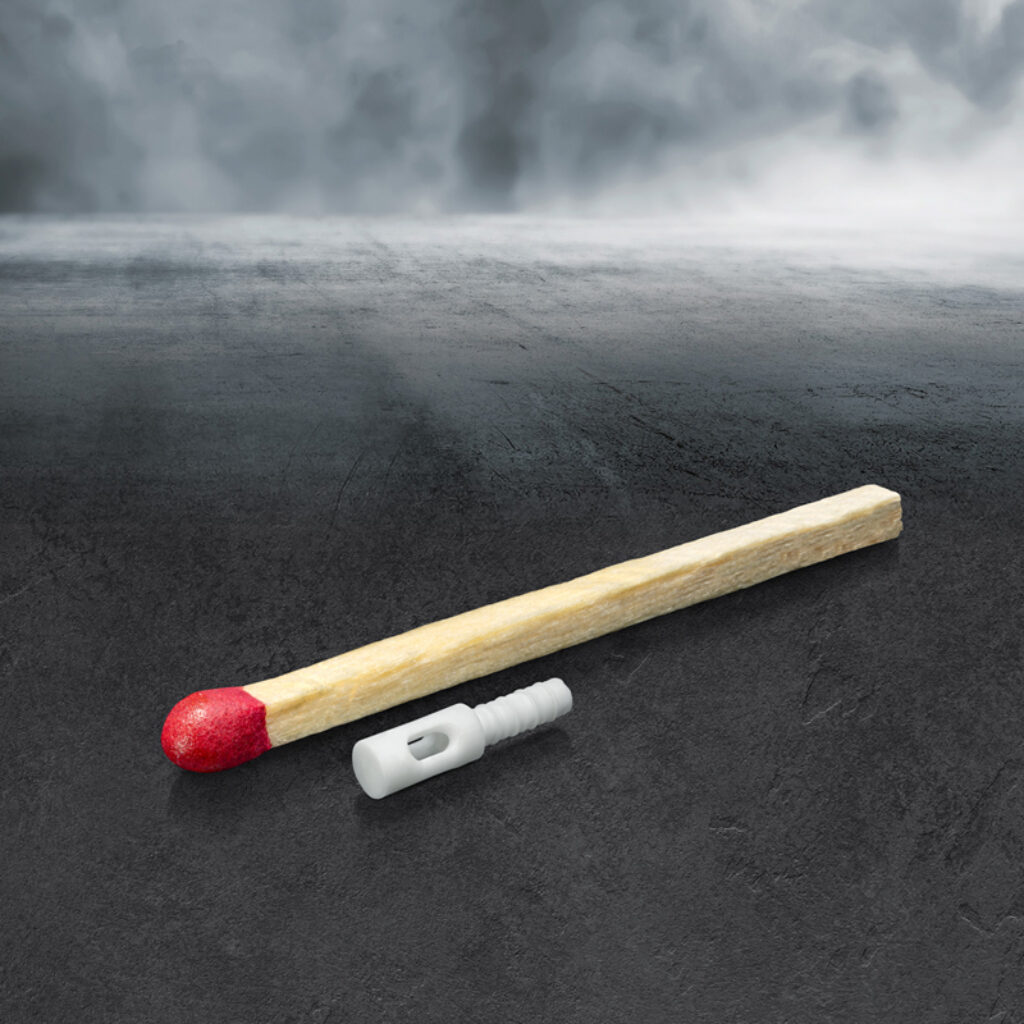6. March 2020
We use micro-injection molding

The ceramics specialist Sembach Technical Ceramics has recently started using the micro-injection molding process. This process is not yet very widespread in the ceramics industry since manufacturers of medical technology devices and components still often lack the knowledge about materials from the field of Technical Ceramics. Technical Ceramics, however, have a number of positive properties that are particularly suitable for miniatures, particularly in the medical technology sector.
Micro-injection molding is used to describe the production of components whose weight is approximately between 0.01 and 0.5 grams. Some parts are so small that they can only be seen with a magnifying glass. Micro-injection molding differs from classic injection molding in that it has a very small injection unit that is integrated in the injection molding machine instead of the normal size unit. This injection unit is based on a different technology. A piston press is used instead of the usual worm shaft. This piston is so small that it can transport very small amounts of material. It is important to monitor the process, which would not be possible with micro-injection molding on a normal injection molding machine. The resolution is too coarse to measure injection pressures, injection volumes, etc. However, monitored processes are the be-all and end-all in many industries and a key requirement for suppliers. With the small injection unit, it is possible to resize the minimal piston movements and thus measure and monitor these small quantities. This is how Sembach ensures process reliability for the micro parts.
Technical Ceramics predestined for medical device technology
Parts that are manufactured using the micro-injection molding process are in demand, for example in medical device technology. The manufacture of medical components, in particular, is subject to sensitive requirements, especially when it comes to components on medical devices that are in direct contact with body tissue. Here, the special suitability of ceramic material (usually oxide and non-oxide ceramic), which is particularly biocompatible, corrosion-resistant and wear-resistant comes into its own. Some typical micro parts made using micro-injection molding are miniature bushings for pacemakers, tips for endoscopes for minimally invasive procedures (see illustration) or tools for miniature components.
High quality standards
With the strict certification according to IATF 16949, which Sembach has, the company is also ideally positioned for medical devices and tools. Sembach, for example, has manufactured the miniature bushings for pacemakers mentioned above. The volume of this part is 13.9 mm3 and the weight 0.055 g. The quality control following the manufacturing process of the micro parts can be carried out automatically at Sembach, depending on the quantity, using a visual microscope inspection or, for high volumes, as an optical 100% inspection using camera systems.
Press Release: micro-injection molding by Sembach
59,3 KB | 8924 downloads
Image to Press Release: micro-injection molding process
660 KB | 4261 downloads


